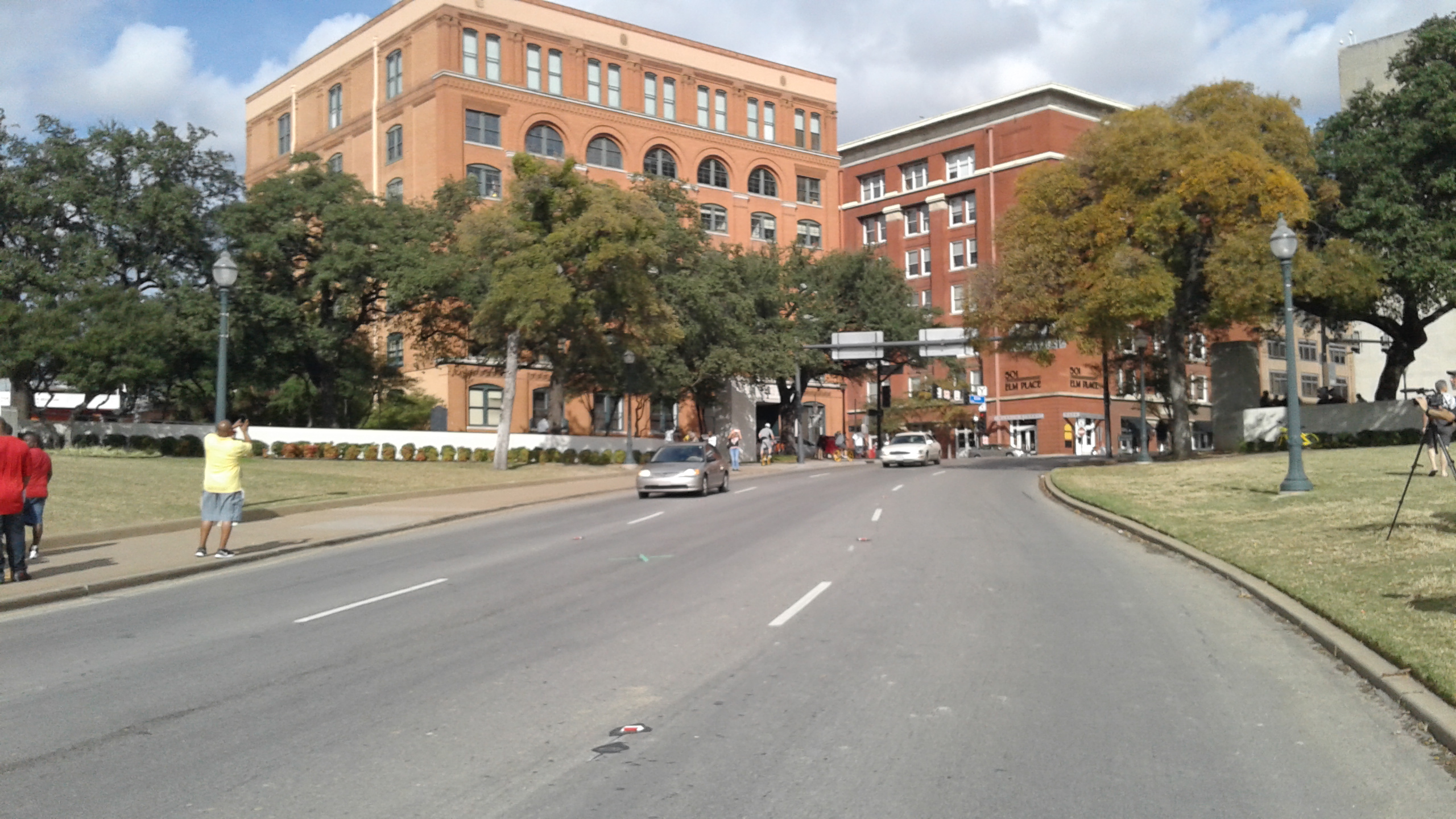One of the advantages of working in Blender and digital 3D space is that once we have a working model, we can go down to Dealey Plaza and test our composition to see how it compares to the real thing.
In the case of the Altgens6, I have puzzled over the perspective seen in the photograph.

First generation researcher, author, publisher and architect Robert Cutler drew this rendering of Dealey Plaza BEFORE it underwent a myriad of changes to landmarks and topography. This has been our most important reference image when creating our Dealey Plaza 3D scene, as we are able to place each object in its proper position and apply the proper scale. Cutler also pinpointed the location of each known photographer, each one here circled in red. Note the position of Ike Altgens on the street, on the left lane of Elm. We are now able to test Robert’s hypothesis:

This next image shows how we have begun to create our composition, by overlaying Elm Street, the limos, motorcycles, people, etc. onto Cutler’s map. Note the position of Altgens camera highlighted below as an orange colored triangle showing the direction of x (red) and y axis (green).

Was Altgens on the infield?
Throughout the years, researchers have assumed Altgens was on the curb, because the Zapruder film shows him there. The official version is that the limousine was traveling at least 11 miles per hour. Here is frame Z347:

This past November 18, I went and conducted a very simple experiment in Dealey Plaza. I stood on the infield beyond the South curb and snapped this photograph. Note that these are generic photos where we are only looking to verify line of sight, not trying to replicate A6 which was taken with telephoto lens at a special camera setting:

Notice how everything now becomes misaligned, with the most obvious indication being the live oak tree, which now lines up with the West wall of the entrance, instead of the East wall as seen in A6. The obelisque monument also shifts noticeably to the left. This is very simple geometry and perspective. Vincent Salandria was the first researcher to have ever tried this (see photo further below). Many years later, in 2012, Ralph Cinque also did re-enactments of the Altgens6. This is how it looks in Blender. Doorman is not even visible, every other object on the street is misaligned as well. For example JFK is not seen behind the rear view mirror, the Queen Mary is much farther down Elm, etc.:

Here is the shot taken from right in the middle of of the left lane of Elm Street:

And here is how it compares to our Blender scene:

This is the photo mentioned earlier, taken by Vince Salandria in July 1964.

What does this all mean?
In 2014, I transcribed the famous “Fred Newcomb tapes”, which are telephone interview recordings of Dallas Police Department officers, including the four who were riding escort flanking the JFK limousine. To my amazement, all four – Bobby Hargis, Jim Chaney, Billy Martin and Douglas Jackson described how the motorcade was crawling along down Elm Street and how the limousine came to a complete stop. James Chaney described how Hargis ran in between the two limousines, JFK’s and the Queen Mary, on his way up the Grassy Knoll in reaction to shots fired. None of this is seen in the extant Zapruder, Nix, or Muchmore films. Douglas Jackson, when first shown the Zapruder film commented: “Ah, Life magazine printed that picture, of that film, but its been cut up,(23:35) it’s been edited, part of it’s been cut out, that film has been cut up.” Bobby Hargis stated many times off the record the motorcade came to a halt. In fact, he even told Newcomb that “you won’t read about that in the Warren Commission”. So here is Bobby Hargis’ perspective, as seen in our 3D rendering in Blender. Altgens was right in his path:

And as we track the line of sight from behind Altgens:

So, would Altgens have ventured onto the street had he felt he was in danger of being run over by two Harley Davidsons? I don’t think so.
